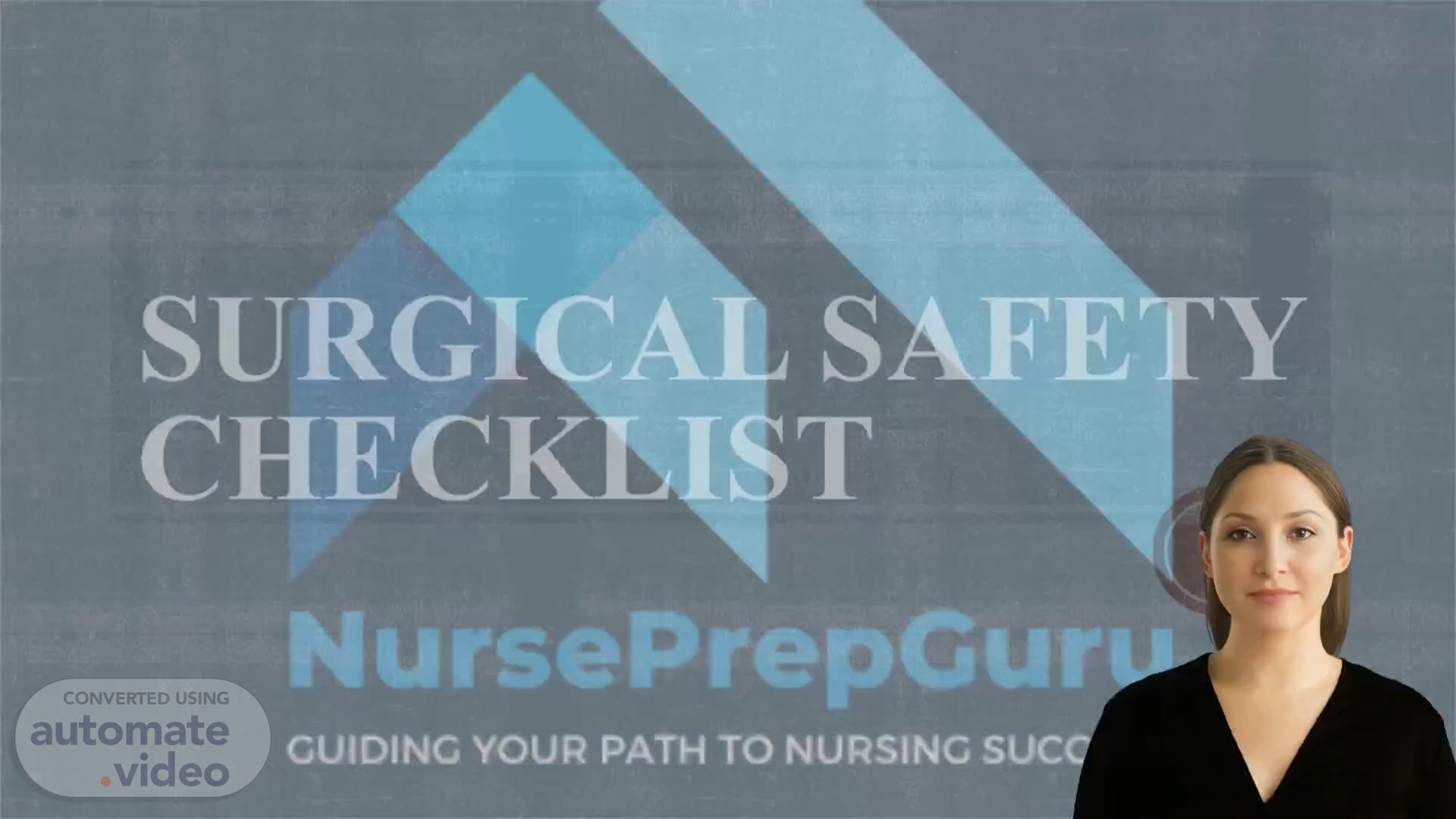
Surgical safety checklist
Scene 1 (0s)
[Virtual Presenter] Good morning everyone! Today we will be discussing the NursePrep Guru surgical safety checklist and how it helps to improve the safety and outcome of surgical procedures. We will look at the importance of the checklist, what it covers and its benefits. Let's get started!.
Scene 2 (20s)
[Audio] Surgical checklists are gaining ground among healthcare professionals as a way to reduce risk of error and ensure patient safety during surgical procedures. A surgical checklist functions like a to-do list, prompting the surgical team and reminding them of the steps and tasks that must be taken. It helps keep the team organized and communication open, allowing them to complete the procedure safely and efficiently. By encouraging systematic and standardized approaches while focusing on safety and communication, the surgical checklist can help reduce the chances of mistakes or complications, ultimately resulting in improved patient care and outcomes..
Scene 3 (1m 2s)
[Audio] Considering surgical safety, a checklist is vital. It consists of three parts. Sign-in ascertains the patient's identity and details the procedure to be conducted. Time-out verifies that all required equipment is present and the medical team is ready to start. Lastly, sign-out attests that the procedure has concluded successfully and all resources and people have been accounted for. Implementing a surgical safety checklist is critical to making sure those included can have no doubt that the most stringent safety procedures have been met..
Scene 4 (1m 41s)
[Audio] The Surgical Safety Checklist from the World Health Organization is composed of three parts: sign in, time out, and sign out. During sign in, the patient's identity and medical record number, procedure to be carried out, and consent for the procedure are confirmed. Time out requires the operative team to confirm the patient, equipment, and implants are correct. Sign out requires the team to make sure all instruments, sponges and implants are accounted for, and the procedure is complete. Each element of the checklist is essential to protecting the patient and the team..
Scene 5 (2m 22s)
[Audio] Ensuring the surgical team has all the necessary information and is aware of their respective roles during the Sign In phase is essential. This entails checking the patient's identification band, confirming the planned procedure, marking the surgical site, discussing the anesthesia plan, verifying essential documents and imaging, and confirming allergies. Doing so helps prevent medical mistakes and ensures everyone involved in the surgery is kept safe..
Scene 6 (2m 52s)
[Audio] Before starting the procedure, all members of the surgical team must go through the important "Time Out" phase. This ensures that all team members are on the same page, know each other's names and roles, and have the correct patient and procedure before starting. The team must confirm that all essential documents and imaging such as X-rays are present and easily accessible. Any special requirements for the patient must also be provided at this stage. Lastly, everyone should agree that they are ready to start and that any issues or concerns have been addressed. This pause for clarity will ensure that the team is confident and prepared for a successful outcome..
Scene 7 (3m 37s)
[Audio] In the 'Sign Out' phase, the surgical team makes sure all necessary steps have been completed and instruments accounted for. They review any special instructions or care required for the patient post-surgery, as well as any issues that came up during the procedure. This phase allows the team to note any improvements needed and when everyone is in agreement, they sign off on the patient and end the surgery. Thereafter, the patient moves ahead with the recovery process..
Scene 8 (4m 8s)
thankyou. [image] A logo with blue triangles Description automatically generated.